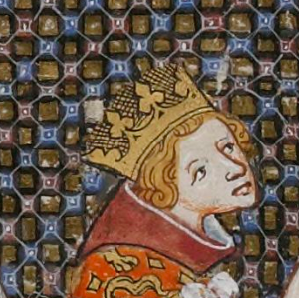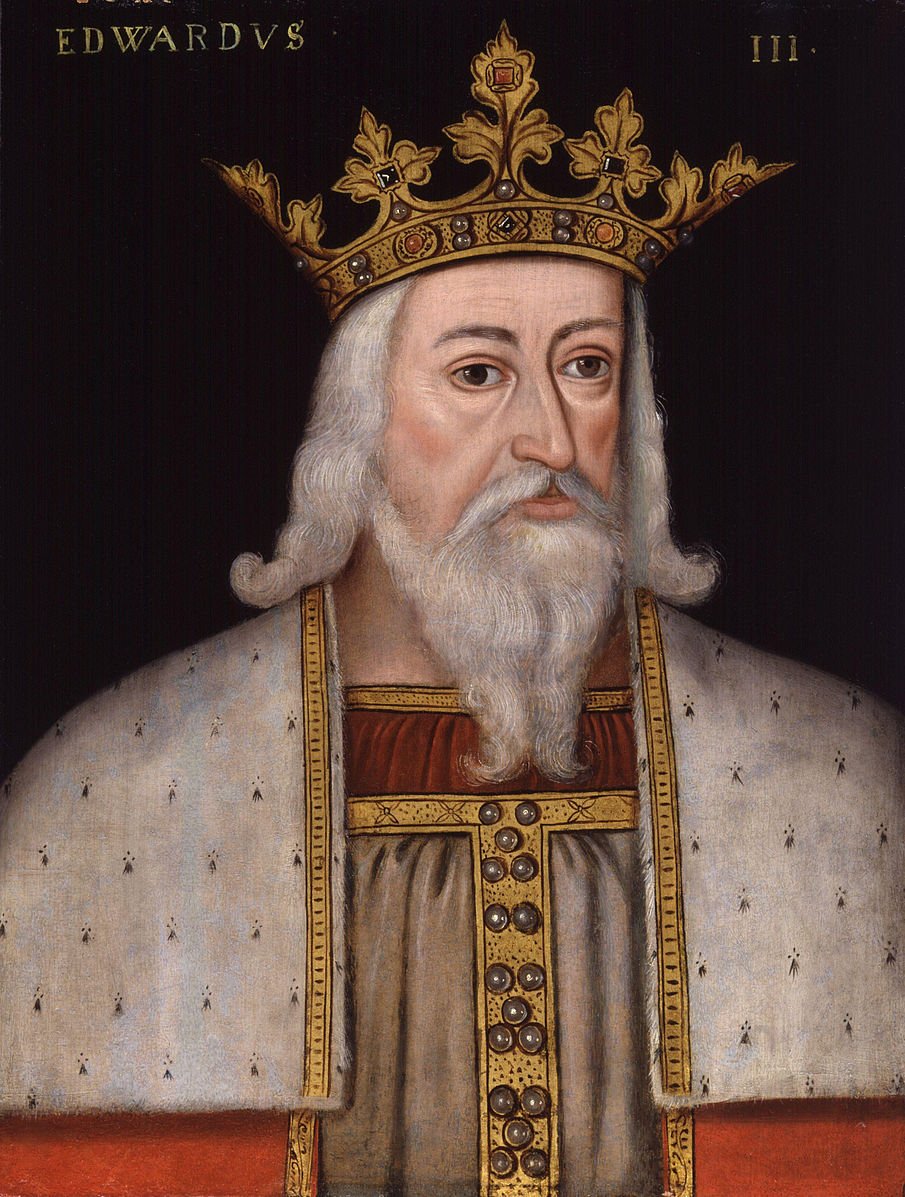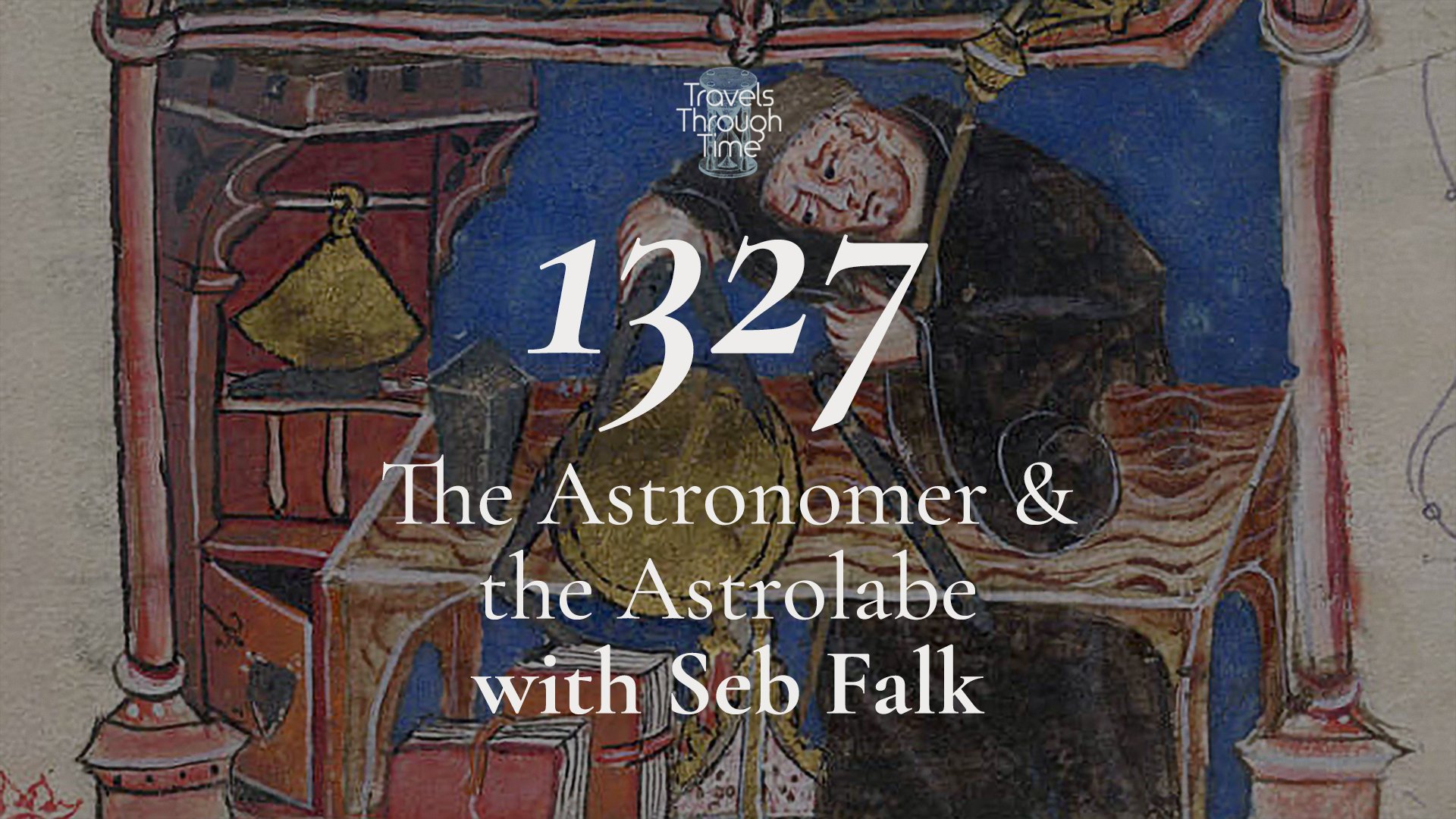Tales from Medieval England: Amy Jeffs (1327)
Amy Jeffs, author of Wild
Today’s guest is the multi-talented artist, historian and musician Dr Amy Jeffs. She spent her university years deep in the Middle Ages, studying palaeography, Anglo-Saxon, Old Norse and Middle Welsh, alongside more traditional art history courses.
*** [About our format] ***
Amy’s fascination with words and images in manuscripts has led her to create two books, Storyland and Wild which explore enigmatic early Medieval stories and are beautifully illustrated with her own linocut prints, while the audiobook versions feature her songs and compositions. Wild, which is just out in paperback, explores the mysterious, riddling tales in The Exeter Book, a rare tenth century manuscript of old English literature which has been in Exeter Cathedral since 1072.
In this episode Amy takes us to 1327, a year of high political drama when Edward II was deposed by his wife, Isabella and his teenage son, Edward III was crowned and began his fifty-year reign. We look at these events through the prism of two manuscripts, one which gives insights into the relationship between the young King and his Mother, while the other shows how people responded to the unprecedented deposition of the former king.
***
Amy Jeff’s latest book is Wild
Sheer cliffs, salt spray, explosive sea spume, thunderous clouds, icy waves, whales with mountains on their backs, sleet, bitter winds, bleak, impenetrable marshes, howling wolves, forests, the unceasing cries of birds and the death grip of subterranean vaults that have never seen the sun: these are wild landscapes of a world almost familiar.
In Wild, Amy Jeffs journeys – on foot and through medieval texts – from landscapes of desolation to hope, offering the reader an insight into a world at once distant and profoundly close to home. The seven chapters, entitled Earth, Ocean, Forest, Beast, Fen, Catastrophe, Paradise, open with fiction and close with reflection.
They blend reflections of travels through fen, forest and cave, with retelling of medieval texts that offer rich depictions of the natural world. From the Old English elegies to the englynion and immrama of the Celtic world – stories that largely represent figures whose voices are not generally heard in the corpus of medieval literature: women, outcasts, animals.
*** Listen to the Podcast ***
Show Notes
Scene One:
A disaster in the scriptorium. A group of manuscript makers, including a scribe and a painter, have been working on producing a book containing a series of portraits of English kings from William the Conqueror to Edward II, surmounting a poem that builds up to an exhortation for Edward II to conquer the Scots.
It’s a well-known poem and an easy commission, except between the scribe writing the poem and the painter coming to the portrait of Edward II, he has suddenly stopped being king. They are forced to erase (by scratching) the last bit of the poem and replace it with something more appropriate. They find a new, ever so politically correct poem called ’The Lament of Edward II’, in which the king himself explains his reasons of abdicating and extols the virtues of his son.
The painter then devises a new image to sit above the text: Edward II passing a crown to the adolescent Edward III. British Library, Royal MS 20 A II.
Scene Two:
A mother’s gift. Sometime between 15-year-old Edward III’s knighting on 31st January and his coronation on 1st Feb 1327, his mother gives him a lavishly illuminated manuscript containing a treatise on kingship.
It emphasises Isabella’s role as his guardian and reveals her ambition for ruling as regent. How, in the light of her sons later actions towards her and her lover and political partner Roger Mortimer, might we imagine the young Edward received it?
Scene Three:
A funeral. Edward III’s father died/was killed at Berkeley Castle, on the 21st September 1327, but his funeral did not take place until 21st October. His body was borne to Gloucester Abbey, not in state, but with a wooden effigy. It was an unusual funeral in many ways and does nothing to dispel the sense of mystery surrounding the former king’s death.
Memento: Edward II’s crown, as displayed on his effigy.
People/Social
Presenter: Violet Moller
Guest: Amy Jeffs
Production: Maria Nolan
Podcast partner: Ace Cultural Tours
Theme music: ‘Love Token’ from the album ‘This Is Us’ By Slava and Leonard Grigoryan
Follow us on Twitter: @tttpodcast_
See where 1327 fits on our Timeline
About Amy Jeffs
Amy Jeffs is a Somerset-based art historian and printmaker with expertise in medieval art and literature. In 2020, she gained a PhD in Art History from Corpus Christi College, Cambridge, having worked at the British Library, and studied for earlier degrees at the Courtauld Institute of Art and Cambridge. Storyland, her first book, was published in 2021. Her latest book is Wild.
Amy’s linocut images can be ordered from this website.
On Twitter.
On Instagram.
On Spotify.
Edward II passing a crown to the adolescent Edward III (Scene One)
Two views of King Edward III of England
The oyster riddle in the Exeter Book
Complementary episodes
The Red Prince: Helen Carr (1381)
Civil unrest, a deadly sickness and trouble in the north? We’re visiting the year 1381 in this episode to examine a dramatic moment in what has been called ‘the calamitous fourteenth century.’
The Astronomer and the Astrolabe: Seb Falk (1327)
Seb Falk takes us back to the early fourteenth century to a seminal year in the life of Richard of Wallingford, one of the best-known scholars of his day: a gifted astronomer, inventor, Abbot and ultimately, victim of leprosy.
Eleanor of Aquitaine, The Matriarch: Sara Cockerill (1199)
Eleanor of Aquitaine was one of the remarkable figures of the High Middle Ages. She lived a long life; was a queen of France and England and a mother to two kings.










